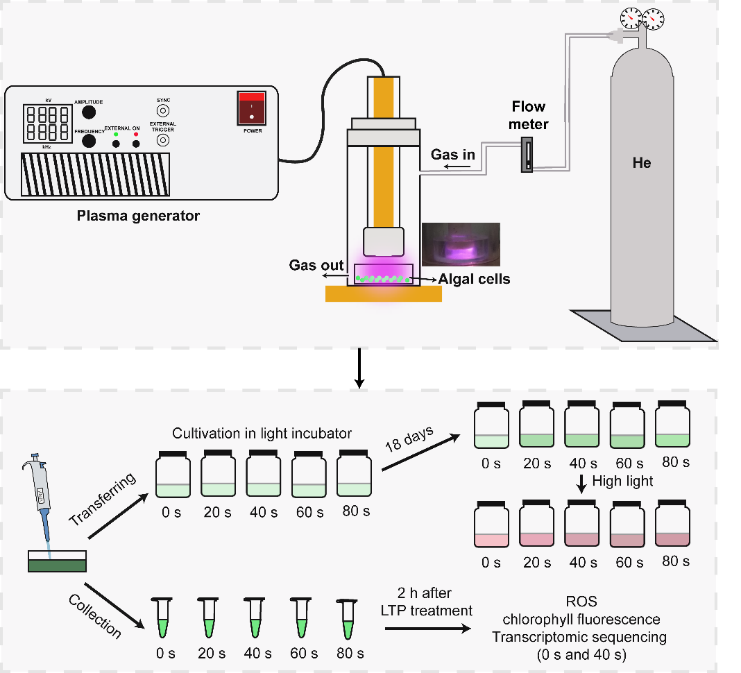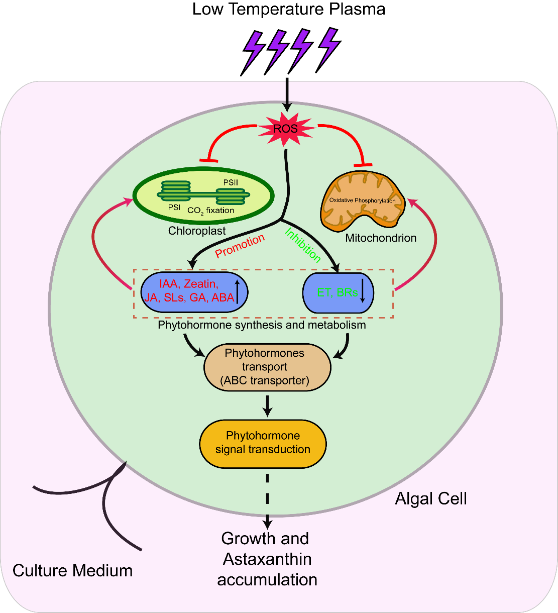
Chinese scientists with Institute of Technical Biology and Agriculture Engineering, Hefei Institutes of Physical Science applied low-temperature plasma technology to stimulate biomass and astaxanthin accumulation in Haematococcus pluvialis at appropriate conditions.
Low-temperature plasma (LTP) is an excellent inducer of oxidative stress in biological systems thanks to its ability to produce a variety of reactive species which can cause a variety of biological effects.
Previously, HUANG Qing and his team had made a series of progress in microbial sterilization, food safety and mutation breeding by using low-temperature plasma.
Astaxanthin is a ketocarotenoid with diverse functions such as coloring, antioxidant and health care, thus it has been widely applied in a variety of industries such as aquaculture, food, cosmetics, health and pharmaceutical industry.
In nature, H.pluvialis is considered to be the microalgae with the highest natural astaxanthin accumulation. Due to the increasing demand for natural astaxanthin and its high price, effective and novel techniques for increasing biomass and astaxanthin yields in H. pluvialis are in great demand for both research and application purposes.
In this work, HUANG and his colleagues explored the optimal conditions of low-temperature plasma discharge on the growth and biomass of H. pluvialis by adjusting plasma treatment time.
As such, they obtained the stimulation effect which was ascribed to ROS induced regulation of redox homeostasis in the photosynthetic process, which improved antioxidant activities correspondingly.
In their work this time, they also conducted comparative transcriptome analysis to explain the mechanism and revealed the involved major stimulating bio-agents.
And they found that the main differentially expressed genes were associated with the metabolism and transport of phytohormones which were enhanced under the oxidative stress induced by LTP treatment.
They believe their work may not only provide a novel and simple way to improve the biomass and astaxanthin production of H. pluvialis, but also help to understand the mechanism for the non-thermal plasma-induced stimulation effect on H. pluvialis.
The research was supported by the National Natural Science Foundation of China.

Schematic diagram of the DBD plasma set-up and the LTP treatment of H. pluvialis (Image by CHEN Zhu)


86-10-68597521 (day)
86-10-68597289 (night)

52 Sanlihe Rd., Xicheng District,
Beijing, China (100864)

